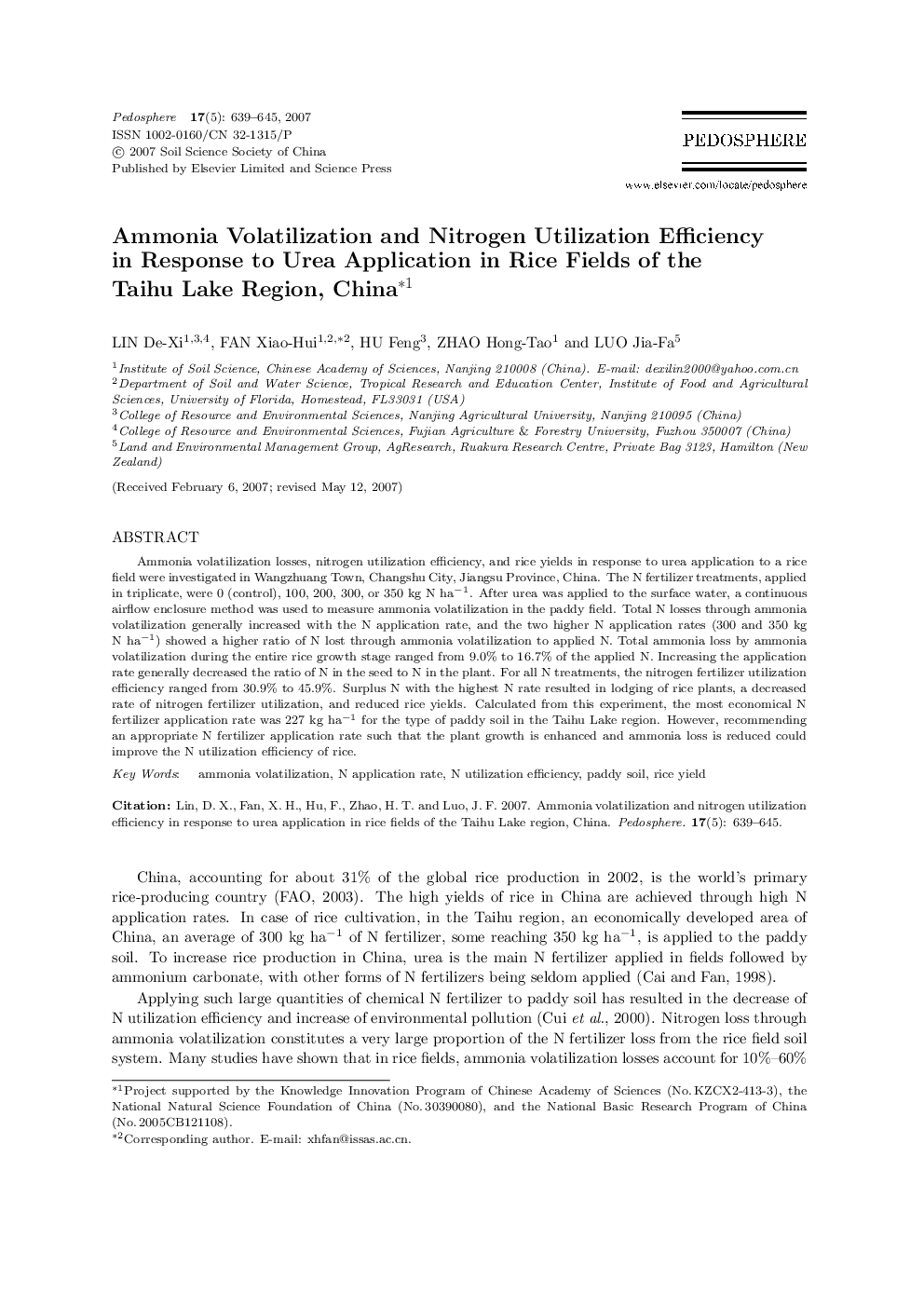| Article ID | Journal | Published Year | Pages | File Type |
|---|---|---|---|---|
| 4582117 | Pedosphere | 2007 | 7 Pages |
Ammonia volatilization losses, nitrogen utilization Efficiency, and rice yields in response to urea application to a rice field were investigated in Wangzhuang Town, Changshu City, Jiangsu Province, China. The N fertilizer treatments, applied in triplicate, were 0 (control), 100, 200, 300, or 350 kg N ha−1. After urea was applied to the surface water, a continuous airflow enclosure method was used to measure ammonia volatilization in the paddy field. Total N losses through ammonia volatilization generally increased with the N application rate, and the two higher N application rates (300 and 350 kg N ha−1) showed a higher ratio of N lost through ammonia volatilization to applied N. Total ammonia loss by ammonia volatilization during the entire rice growth stage ranged from 9.0% to 16.7% of the applied N. Increasing the application rate generally decreased the ratio of N in the seed to N in the plant. For all N treatments, the nitrogen fertilizer utilization Efficiency ranged from 30.9% to 45.9%. Surplus N with the highest N rate resulted in lodging of rice plants, a decreased rate of nitrogen fertilizer utilization, and reduced rice yields. Calculated from this experiment, the most economical N fertilizer application rate was 227 kg ha−1 for the type of paddy soil in the Taihu Lake region. However, recommending an appropriate N fertilizer application rate such that the plant growth is enhanced and ammonia loss is reduced could improve the N utilization Efficiency of rice.
